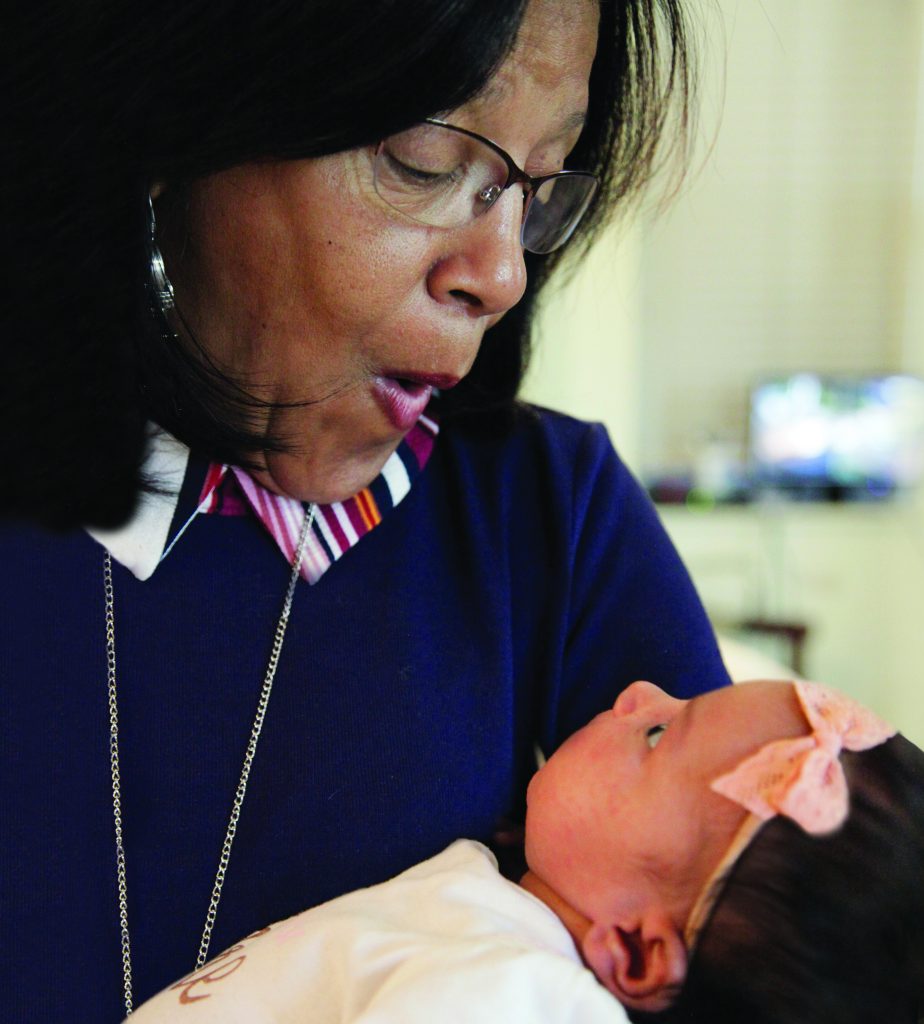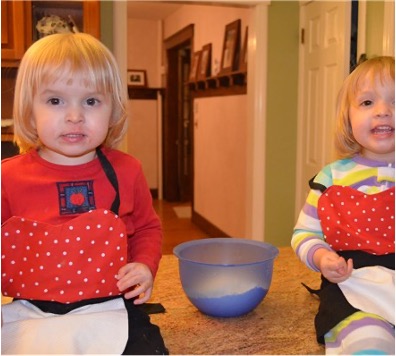What causes autism?
Scientists have learned that there is not one thing that causes autism, but that a combination of multiple genetic and environmental factors is the usual cause.
The specific genetic cause of autism can be pinpointed in approximately 15-20% of people with autism. In some cases, autism can be caused by a single gene being mutated; these are called rare genetic variants. In addition to rare variants, there are also genetic influences from common variation. Common variants are mutations that have small effects individually, but if there are enough of them they can significantly contribute to an autism diagnosis. Finally, there are genetic and environmental interactions, which means that certain environmental factors (from toxic chemicals to maternal medical conditions to the age of parents at conception) may also interact with any or all of these genes to change the probability of a diagnosis.
One theory, popular in the late 1990’s and early 2000’s, that vaccines cause autism, has since been disproven by numerous studies conducted around the world.
What you should do if you are concerned

Early diagnosis and intervention are critical to future success for your child. If you have concerns about your child’s development, don’t wait; talk to your pediatrician or healthcare provider. There are many types of evidence-based therapies based on Applied Behavior Analysis (ABA) that are appropriate for children as young as 12 months old. A video-based, interactive, multicultural series with examples of very early signs of autism as well as ways to intervene at home can be found on Baby Navigator and Autism Navigator.
In addition, The American Academy of Pediatrics strongly recommends that all children be screened for autism using a tool called the Modified Checklist for Autism in Toddlers at a child’s normal 18 and 24 month well-baby visits. If you are not given the opportunity to fill one out, ask for one. If you fill it out and your doctor does not discuss the results, ask to see them. The MCHAT may overestimate the number of individuals who have autism, which means it is designed to be more sensitive to all children with different types of developmental delay rather than being specific to ASD. You can also take the MCHAT online here.
If the MCHAT or other developmental screening tool indicates cause for concern (or if you are simply concerned without taking the MCHAT or other tool) contact your pediatrician and ask for a referral for a developmental evaluation. Do not let them tell you to not be concerned—you know your child best.
There may be a waitlist for a formal evaluation, but there are things you can do to promote the social and communication development of children before they receive a formal evaluation. The Baby Navigator and Autism Navigator offer great resources for steps parents can take while waiting for a full screening. ASF is an active partner with these resources and we find them highly valuable for parents.
Autism Science Foundation is also a partner in the CDC’s “Learn the Signs, Act Early” initiative, which provides additional resources for families such as early intervention contacts by state and a new milestone tracking app.
It is important to note that if your child is showing one of these symptoms it does not automatically mean an autism diagnosis. It means you should consult an expert for more advice.
Using Milestones to Track Development
Families can also benefit from an awareness of key developmental milestones as their child grows. These milestones help all families, regardless of concern about autism, understand their child’s development as compared to typically developing children at the same age. Tracking your child’s development can help you recognize potential concerns and identify areas where your child could benefit from specific supports and services.
The Baby Navigator provides a timeline of detailed milestones for babies and toddlers from 1 to 24 months. The CDC provides milestones in different categories from 2 months to 5 years of age, and additional material through “Learn the Signs, Act Early”. Previously, CDC milestones indicated what was expected to be achieved by 50% of children at each age. As of February, 2022, this has been updated to instead reflect what the majority (75%) of children can be expected to achieve.
Below are some highlights of the milestones your child should reach at each age. This is not an exhaustive list, and is focused on milestones that can be easily observed through interacting with your child. Please go to the CDC Learn the Signs Act Early website or Baby Navigator for more examples of what you should expect your child to achieve at each age.
Your Child’s First 18 Months
By 2 months old, your child should be:
- Looking at your face
- Smiling when you talk to, smile at, or walk up to them
- Easily looking at faces and object that are near them
- Able to orient toward your voice and change what is being done in response to a caregiver or adult
- Exploring their body by touching and mouthing
- Moving both arms and both legs
By 4 months old, your child should be:
- Smiling and laughing when you make a silly sound or a toy makes a fun noise
- Looking at you, moving, or making sounds to get or keep your attention
- Making sounds back when you talk to them
- Looking at hands with interest
- Able to hold a toy when you put it in their hand
- Pushing up onto elbows/forearms when on tummy

By 6 months old, your child should be:
- Looking at themself in the mirror
- Laughing
- Shifting their attention from you to an object and back to you
- Blowing “raspberries” (sticks tongue out and blows)
- Reaching to grab a toy they want
- Rolling from tummy to back
By 9 months old, your child should be:
- Showing several facial expressions, like happy, sad, angry, and surprised
- Looking when you call their name
- Making different noises with their mouth and make different sounds
- Banging two things together
- Sitting without support

By 1 year old, your child should be:
- Waving “bye-bye”
- Calling a parent “mama” or “dada” or another special name
- Using gestures like showing and pointing to get you to notice what they are interested in
- Able to follow simple directions like “come here” or “give it to me” when prompted with gestures
- Pulling up to stand
- Drinking from a cup without a lid, as you hold it
Your Child at 18 – 30 Months
Between 18 and 24 months, the symptoms of autism become apparent enough that a definitive diagnosis is possible. If your child is not meeting these milestones, you need a formal evaluation by an expert clinician.
By 15 months old, your child should be:
- Clapping when excited
- Able to communicate to get your attention and check in with you regularly
- Looking at a familiar object when you name it
- Using at least 5 different words that mean something
- Trying to use things the right way, like a phone, cup, or book
- Stacking at least two small objects, like blocks
- Taking a few steps on their own
By 18 months old, your child should be:
- Pointing to show you something interesting
- Putting hands out for you to wash them
- Using at least 10 different words that mean something
- Copying you doing chores, like sweeping with a broom
- Walking without holding on to anyone or anything
- Climbing on and off a couch or chair without help
- You should fill out an MCHAT when your child is 18 months old


By 2 years old, your child should be:
- Noticing when others are hurt or upset, like pausing and looking sad when someone is crying
- Looking at your face to see how to react in a new situation
- Able to talk with you about a topic they are interested in like they are having a conversation
- Able to use at least 100 words in phrases that include names, actions, and descriptions
- Kicking a ball
- Running
- Walking (not climbing) up a few stairs with or without help
- You should fill out an MCHAT when your child is 2 years old
By 30 months old, your child should be:
- Playing next to other children and sometimes playing with them
- Showing you what they can do by saying, “look at me!”
- Naming things in a book when you point and ask, “What is this?”
- Saying words like “I,” “me,” or “we”
- Following two-step instructions like “Put the toy down and close the door”
- Taking some clothes off by themselves, like loose pants or an open jacket
Your Child at 3 – 5 Years
Many children are diagnosed between 3 and 4 years of age, and many parents report feeling concerned even earlier. If your child is not meeting these milestones, contact your local school district to discuss early intervention
By 3 years old, your child should be:
- Talking well enough for others to understand, most of the time
- Able to draw a circle, when you show them how
- Putting some clothes on by themself, like loose pants or a jacket
- Using a fork
- Joining other children in play
- Saying their first name when asked


By 4 years old, your child should be:
- Pretending to be something else during play (teacher, superhero, dog)
- Comforting others who are hurt or sad, like hugging a crying friend
- Telling what comes next in a well-known story
- Serving themself food or pouring water, with adult supervision
- Unbuttoning some buttons
By 5 years old, your child should be:
- Singing, dancing, or acting for you
- Telling a story they heard or made up with at least two events. For example, a cat was stuck in a tree and a firefighter saved it
- Writing some letters in their name
- Hopping on one foot
Signs of Autism
It is important that you see a specialist for evaluation if your child is not meeting the above milestones, or if your child exhibits any of the following at any age:
- Loss of skills they once had
- Anxiety, stress, or excessive worry
- Unusual eating and sleeping habits
- Gets upset by minor changes
- Must follow certain routines
- Flaps hands, rocks body, or spins self in circles
- Repeats words or phrases over and over (called echolalia)
- Has unusual reactions to the way things sound, smell, taste, look, or feel


- Lines up toys or other objects and gets upset when the order is changed
- Limited use of gestures such as giving, showing, waving, clapping, pointing, or nodding their head
- Difficulty using eye contact, gestures, and sounds or words all at the same time
- Does not look right at people or hard to get them to look at you
- Very focused on or attached to unusual kinds of objects such as strips of cloth, wooden spoons, rocks, vents, or doorstops
- Over or under-reaction to certain sounds, textures, or other sensory input
- Is unusually withdrawn and not active in social situations

